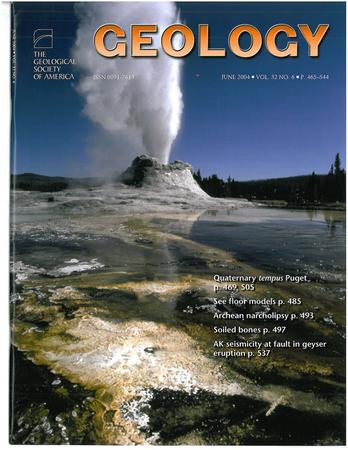Constraining the Baltic Sea sediment chronology using tephrochronology
IF 4.6
1区 地球科学
Q1 GEOLOGY
引用次数: 0
Abstract
Precise and accurate sediment chronologies are essential for studies of past climate change. In the brackish-marine environment of the Baltic Sea, radiocarbon dating is complicated by varying influx of old carbon and reservoir age changes, challenging the construction of a robust age model. One approach to overcome the problem is well-dated isochronous tie-points like tephra. Here, we present for the first time four cryptotephra horizons in the interval 4500−2000 cal. a BP from sediments of the Western Gotland Basin containing tephra populations from the Hekla-4, Hekla-S, and Hekla-3 eruptions and the Glen Garry and Grákolla tephras from eruptions of Askja and Torfajökull, respectively. In combination with new and published radiocarbon ages, we quantify 14C age offsets for these snapshots in time. In homogeneous sediments, which contain old bulk organic carbon, ages reveal divergences of up to 1200 years. In time intervals not influenced by influx of old carbon, we define a regional marine reservoir age of 250 ± 50 yr. Based on the tephra ages as tie points and applying this reservoir age we calculate a revised age model for the Western Gotland Basin with reduced dating uncertainties that shifts previous chronologies by ∼200 years toward older ages.用温度年代学约束波罗的海沉积物年代学
精确的沉积物年表对研究过去的气候变化至关重要。在波罗的海的半咸水海洋环境中,放射性碳定年因不同的旧碳流入和储层年龄变化而变得复杂,这对构建可靠的年龄模型提出了挑战。克服这个问题的一种方法是像tephra这样年代久远的等时联络点。在此,我们首次从西哥特兰盆地的沉积物中发现了在4500 ~ 2000 cal. a BP范围内的4个隐隐体层,这些隐体层分别来自Hekla-4、Hekla-S和Hekla-3喷发,以及来自Askja和Torfajökull喷发的Glen Garry和Grákolla tephras。结合新的和已发表的放射性碳年龄,我们及时量化了这些快照的14C年龄偏移。在含有古老的大块有机碳的均质沉积物中,年龄显示出长达1200年的差异。在不受旧碳流入影响的时间间隔内,我们定义了一个250±50年的区域海洋储层年龄。基于tephra年龄作为结合点,并应用该储层年龄,我们计算了西哥特兰盆地的修订年龄模型,该模型降低了测年不确定性,将以前的年表向更老的年龄偏移了约200年。
本文章由计算机程序翻译,如有差异,请以英文原文为准。
求助全文
约1分钟内获得全文
求助全文
来源期刊

Geology
地学-地质学
CiteScore
10.00
自引率
3.40%
发文量
228
审稿时长
6.2 months
期刊介绍:
Published since 1973, Geology features rapid publication of about 23 refereed short (four-page) papers each month. Articles cover all earth-science disciplines and include new investigations and provocative topics. Professional geologists and university-level students in the earth sciences use this widely read journal to keep up with scientific research trends. The online forum section facilitates author-reader dialog. Includes color and occasional large-format illustrations on oversized loose inserts.
 求助内容:
求助内容: 应助结果提醒方式:
应助结果提醒方式:


